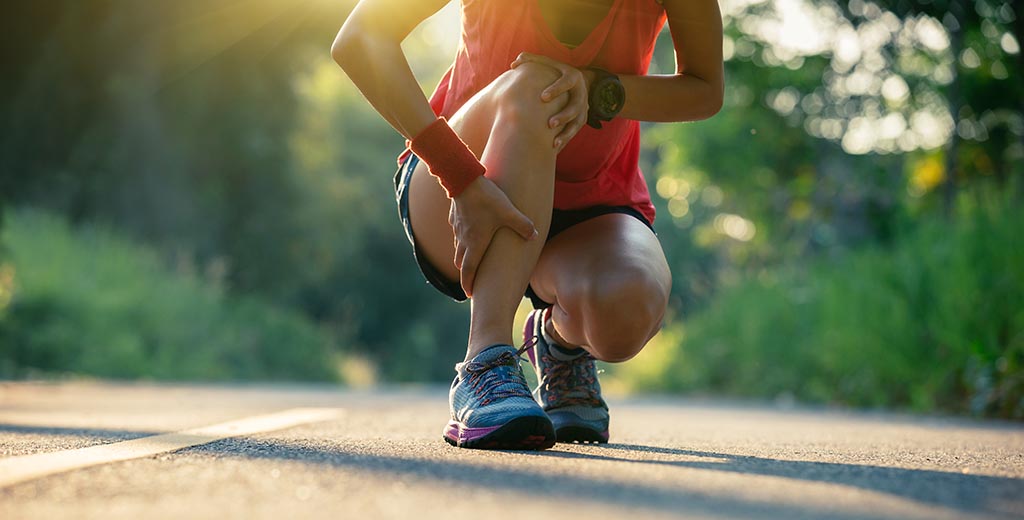Every sports player experiences acute to severe injuries once in their lifetime. Failing to warm-up increases the risk of sports injuries for new players. A sudden movement in the wrong ways, falling to the ground and a strong collision with another player can result in an unprecedented sports injury.
Let’s look at some common types of sports-related injuries and possible prevention measures one can take to reduce the risk of getting hurt!

Types
There are several types of sports injuries that can occur due to poor training practices, insufficient warm-up and stretching, improper equipment, and accidental falls or trips. Here are some common types of sports injuries;
- Ankle sprain – It can lead to immediate pain, swelling and stiffness.
- Achilles tendon rupture- It’s a common sport injury that can break or rupture a thin tendon located at the back of your ankle. One may experience sudden and excruciating pain, swelling and trouble in walking.
- Concussion – First signs of concussion include headache, dizziness or short term memory loss. It is considered as a mild reversible brain injury due to sudden blow to the head, involving loss of consciousness.
- Dislocations- Usually, dislocation happens to the shoulder. In this condition a bone is forced out of its socket. Treatment under orthopaedics is required to control swelling and weakness.
- Stress fractures – Particularly happens in the lower limbs. The impact of repeated motions including jumping or running on hard surfaces can eventually put stress and crack bone.
- Rotator cuff injury- The rotator cuff coordinates the movement of the shoulder. A tear in any of four rotatory muscles can weaken the rotator cuff, leading to pain and swelling to the joint.
- Knee joint injuries – You can identify the injury by noticing symptoms including pain, swelling and stiffness. Ligaments, tendons or cartilage associated with the knee joint can be adversely affected.
- Tennis Elbow – Overuse of joints can lead to inflammation of the tendons on the outside of the elbow causing small tears, pain and weak grip.
Apart from these, there are other forms of low-grade to traumatic injuries, but fortunately, most of them can be treated effectively.
Treatment
An idea of initial treatment for any sports injuries is to control inflammation and promote quick relief. A renowned acronym R.I.C.E works as an immediate remedy option to treat acute sports injuries.
While performing R.I.C.E. treatment, make sure to follow these steps;
Rest
As you hear a snap, or feel discomfort while performing any activity, stop yourself immediately. You need to relax and limit the force acting on the injured part.
Ice
For any muscular or skeletal injury, Ice works as a first-aid to control swelling, pain, and inflammation. After Ice therapy, some athletes don’t even require pain-controlling pills to alleviate discomfort. Never apply a heating pad immediately, it is applied after treating any injury.
Compress
A soft slow compression at the injured area is required to avoid symptoms getting worse. Do not wrap it tightly as it can cause pain and increase the swelling.
Elevate
You can pile up two to three pillows or lift the injured part with the help of support. Elevation can also help reduce swelling and inflammation and pain.
Well, the technique is applied to bring instant relief, you need medical intervention for a thorough check-up. Your orthopaedic will conduct a physical examination and imaging test to observe to examine the severity of the injury. After diagnosing, the injury can be protected with an assistive device, such as crutches or a sling, while gently moving the joint. Some exercises are recommended that will help put weight on the injury and work towards speed healing.
In case of severe injury, additional treatment may require such as;
- Immobilization with a splint, cast, or brace
- Pain Medications
- Physical therapy
- Surgery
Preventive Tips
According to sports injury specialists, the best way to prevent these snaps & cracks is to warm up and stretch properly before engaging in strenuous activity. Warm muscles don’t sore up and are easy to flex, absorbing quick bends, movements, and jerks.
Some methods helping you to avoid sports injuries;
- Always use the correct form
- Do not forget to stretch
- Never forget to warm-up
- Own a right equipment
- Don’t overexert
- Take a break & cool down
- Resume activity slowly
- Have a healthy & well-balanced diet
- Emphasize hydration
- Wear appropriate Gear
Conclusion
Indeed it’s a hard pill to swallow for a sports enthusiast to take a break from its favorite activity. Take a note, letting a sports injury go untreated could lead to the potential damage that can restrict your return to your sports altogether. When your body calls for rest, give yourself a break, consult a sports injury specialist and get your planned treatment schedule that helps you to return to your field sooner!

Recent Comments